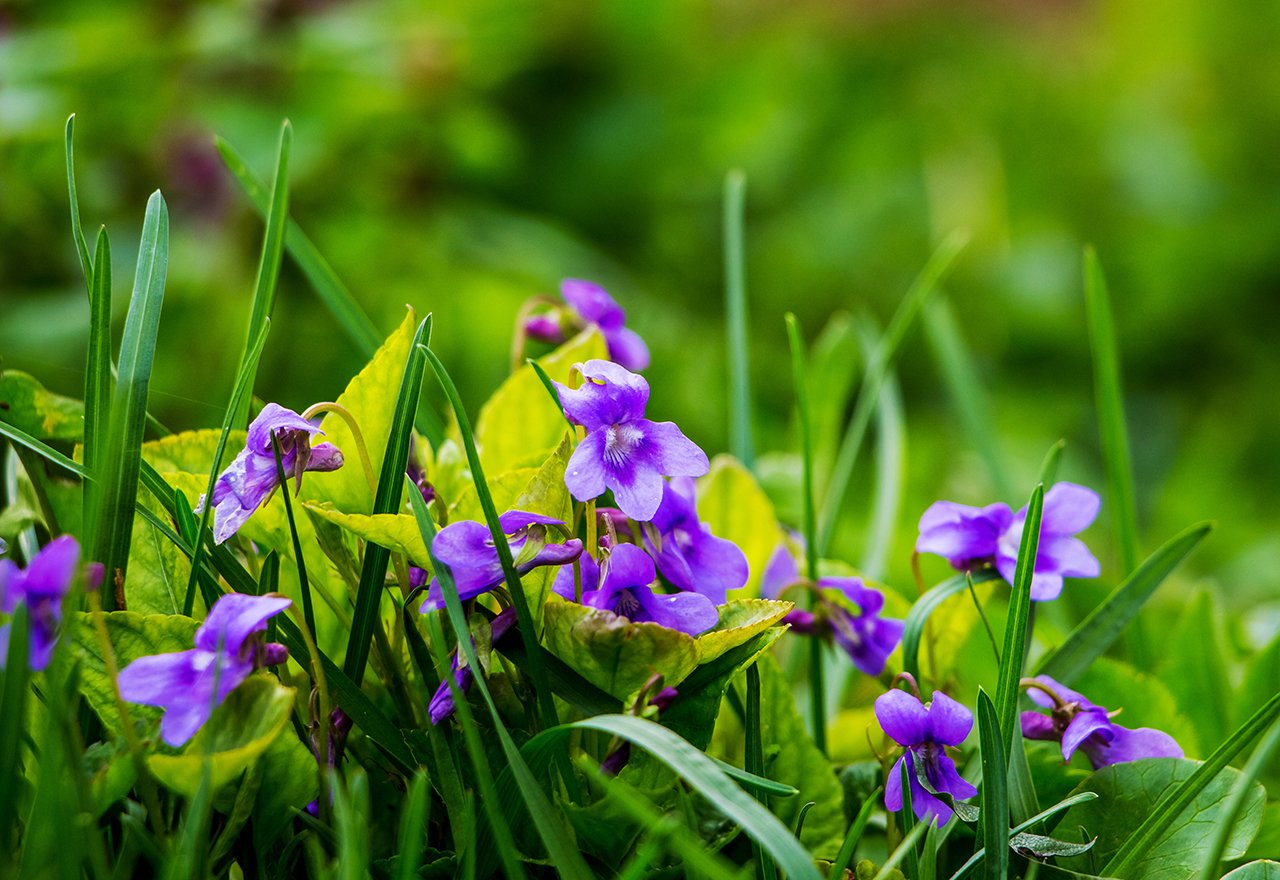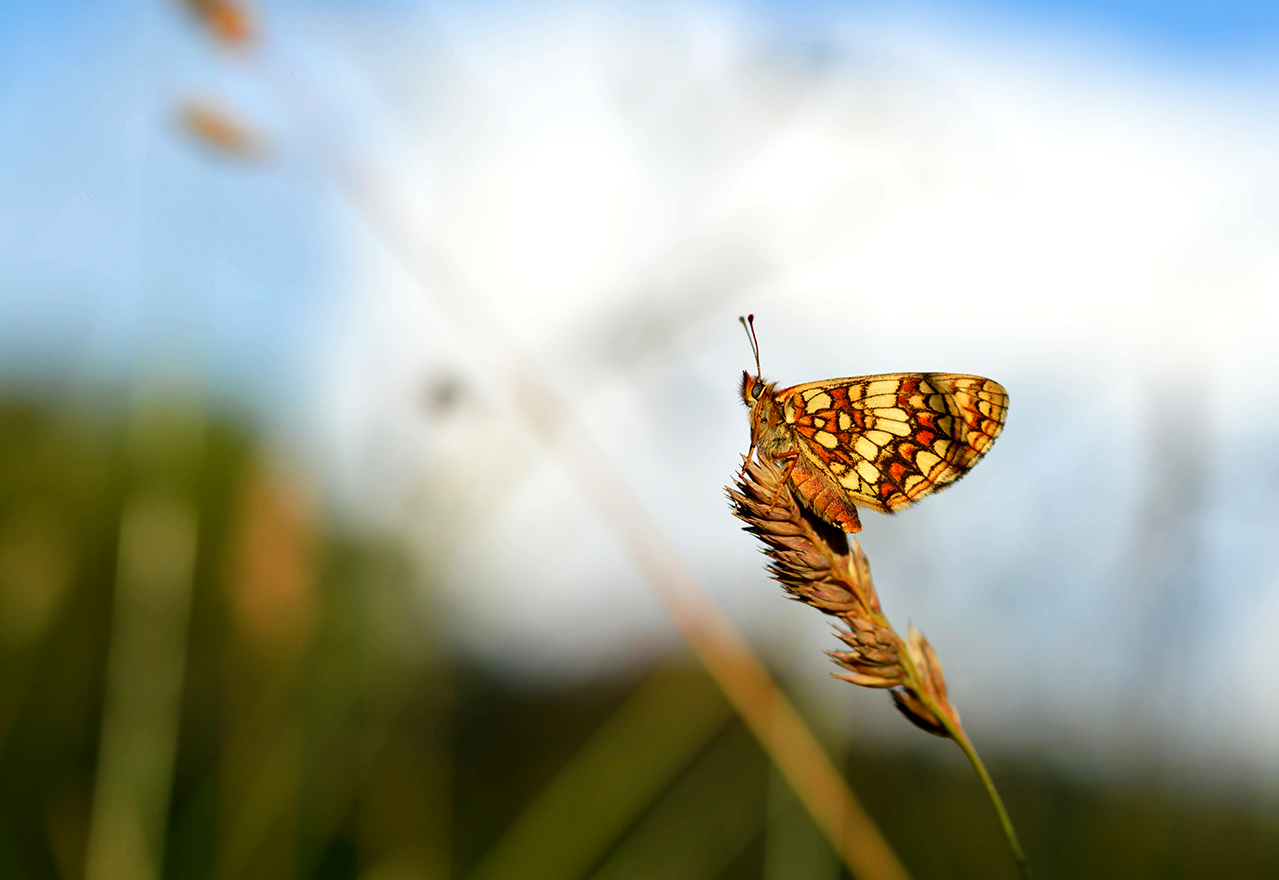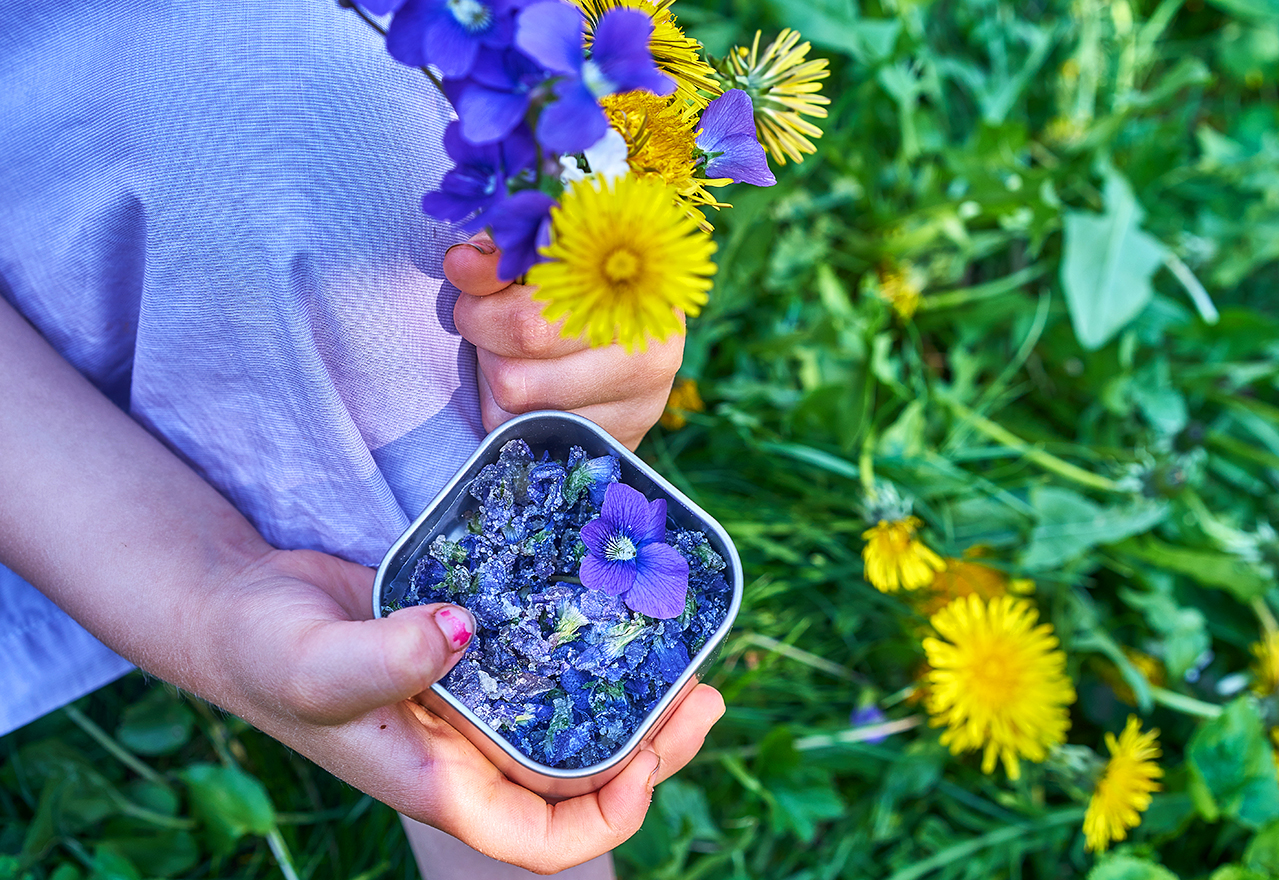Embrace the Wild Violets in Your Lawn
by Maureen Wise, on May 9, 2022

In the Spring, we get excited about caring for our lawns and gardens after a cold, white Winter. Not many flowers are blooming in the gardens in the Midwest in April and May but yellow dandelions and purple violets are blooming in the lawn. Your neighbors may not like these flowers but we want you to reconsider your ideas about Wild Violets.
We encourage you to embrace the Wild Violets in your lawn. These short flowers are native to the entire continental United States, as well as southern Canada. They were growing in our forests long before turf grass was planted. With their waxy leaves, few weed killers work well against them. They’re really, really hard to get rid of so giving them permission to live in your lawn can be liberating.

Violets are an early source of nectar for pollinators such as honey bees, bumble bees, blue orchid bees, and mason bees. Bees actually prefer sun-warmed violets in lawns compared to violets that grow in shaded forests. But most importantly, they are the only food source for mining bees (Andrena Violae) and the only larva food source for the many species of Fritillary Butterflies. Fritillary Butterflies are orange and black, and like orange and black monarchs, their caterpillars are just as picky about their diet. There are over 500 species of violets worldwide and around 90 in North America. Wild Violets are an important part of the natural ecosystem.
Violets are low growing: usually under four inches, so below the reach of your lawn mower. They have dark green, heart shaped leaves that remain green year long. The constant green is a compliment to Microclover, which also remains green throughout the year. We love Microclover for its year round color but also because, as a legume, Microclover adds nitrogen to your soil, passively fertilizing your lawn. Together, Wild Violets and Microclover can boost lawn greenness in the later Summer when some turf grasses turn yellow. Wild Violet’s purple flowers can vary in color from dark purple to light purple to blue or even yellow or white. Violets grow in full sun and shade. They’re most happy in moist soil, but will withstand dry spells with no trouble. Violet plants reproduce via rhizomes and seeds and can spread quickly. They’re hardy, easily recognized, and beneficial in many ways.

Additionally, Wild Violets are edible and are often used to decorate desserts and salads. They’ve been used as a remedy for burns and bruises and made into a tea for a cough. Violet flowers can also be used as a dye.
Are you sold? Will you stop fighting Wild Violets in your lawn and instead allow them to feed insects and animals? They will work for you to keep your lawn looking green all year. Embrace the pretty purple flowers in the Spring. Collect a tiny bouquet of them to put in a vase on your windowsill or kitchen table and enjoy their unique benefits.











